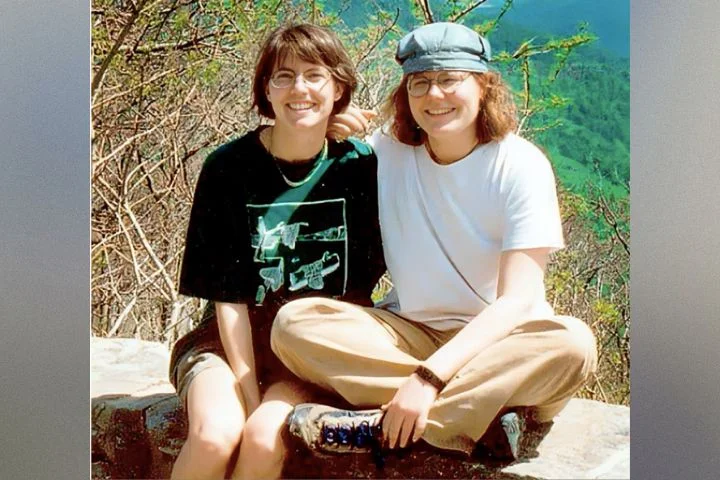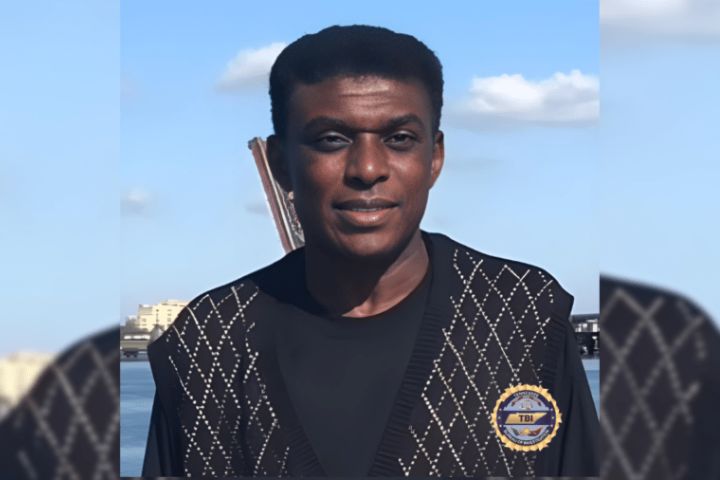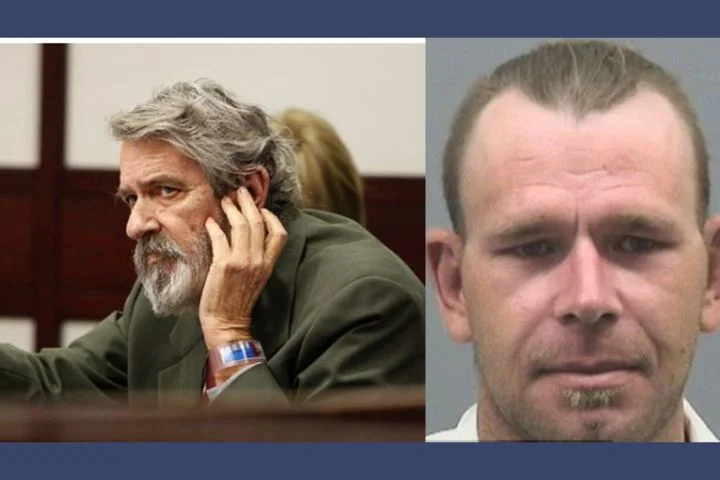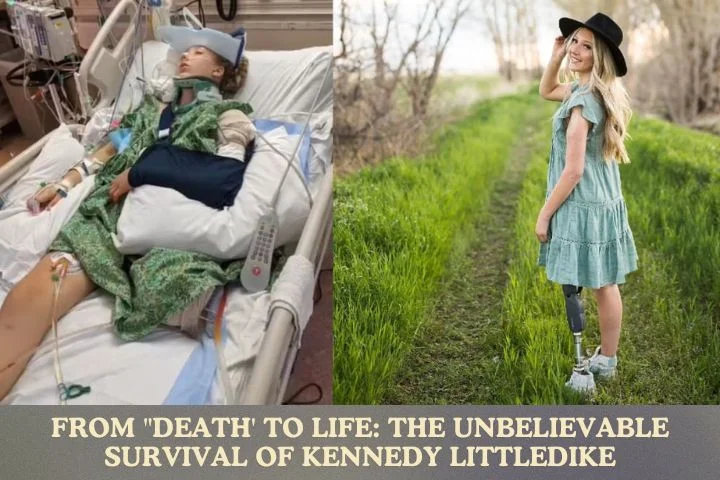On Sunday, May 19, 1996, Julianne “Julie” Williams, 24, and Lollie Winans, 26, set out with their golden retriever, Taj, to hike through the Shenandoah National Park in Virginia. During their stay in the park, they were brutally mu*rdered at a tranquil campsite. Despite suspicions that a Columbia, Maryland man was the perpetrator, the case against him fell apart.
The FBI is still investigating the mu*rders of Julie and Lollie, but 24 years on, the case is still open and unsolved.
Who were Lollie Winans and Julie Williams?
Lollie was from a wealthy family in Michigan, but friends described her personality as down to earth, and she rejected the privilege of her birth. After she graduated from high school, Lollie dropped out of college. In 1994, she moved to Maine and attended Unity College. She also worked as a wilderness guide. According to journalist Barry Yeoman, Lollie was a “microbrew-drinking, Phish-following, cigarette-smoking, good-time girl.”
Julianne, who called herself Julie, loved sports and geology. She was passionate about helping her community. She won the Minnesota state double tennis championship in high school and traveled to Europe in college to study the extinction of dinosaurs. She graduated summa cum laude and spoke fluent Spanish. She worked at a Burlington, Vermont, bookstore and was about to begin a new job in Lake Champlain, Vermont, on June 1, 1996.
Julie and Lollie met at a charity in 1994 called Woodswomen in Minnesota. Woodswomen, Inc. was a nonprofit organization focusing on education and adventure travel run by women for women out of Minneapolis from 1977 to 1999. It was referred to as the ‘grandmother’ of women’s outdoor adventure groups, was one of the first adventure travel companies serving exclusively women, and served more than 8,000 women and 1,200 children. Their strapline was “Adventure is the best Souvenir”.
The couple developed a relationship despite their different backgrounds. Hiking and spending time in the outdoors was a mutual passion.
The Hiking trip to Shenandoah National Park
After a day of walking, Julie and Lollie pitched their tent off one of Shenandoah National Park’s horse trails and settled down for the night. They chose a peaceful spot next to a mountain stream near the Bridal Trail, a part of the horse trail system that runs from Big Meadows to Skyland.
The park, founded on December 26, 1935, stretches over a hundred miles along the Blue Ridge Mountains, located between the Shenandoah Valley in the west and the Piedmont region in the east. It is located around 75 miles from Washington DC, covers an area of 197,411 acres and includes mountain streams, more than 500 miles of hiking trails, and nearly 80,000 acres of designated wilderness.
One of the park’s most famous features, Skyline Drive (constructed in the 1930s by the Civilian Conservation Corps), has 105 miles of scenic overlooks, trailheads, picnic areas, and campgrounds between Front Royal in the north and Rockfish Gap in the south. Another way to cross the length of Shenandoah is by hiking the hundred or so miles of the Appalachian Trail that runs across the park.
It was the weekend after Memorial Day, so the area was busy with hikers and sightseers.
The authorities begin their search
On May 31st, the authorities were notified by Thomas Williams, Julie’s father, that the women were missing, and park rangers set out to look for them.
They found their car parked near Skyland Lodge and began a search of nearby trails. Park rangers quickly found the dog, Taj, walking around without a leash, but there was no sign of the women.
Bridget Bohnet, Deputy Chief Ranger at Shenandoah National Park, said, “We started doing hasty searches to cover all of those trail corridors in that general area to see if we could locate them. At some point during those hasty searches we did locate the dog.”
On June 1, 1996, searchers came across a camp about half a mile from the vehicle with the bodies of Julie and Lollie.
National Park Service lead investigator Tim Alley said Lollie was found inside the tent. Like Julie, she had been gagged; her hands had been bound with duct tape– duct tape that, oddly, had first been used to tape Julie’s mouth– and her throat had been slit. Unlike Julie, her ankles were also bound. Both were partially undressed, yet neither woman had been sexually assaulted, or, at least, no semen was found. Julie’s body and sleeping bag and pad were “approximately 30-40 feet away, down a little embankment”.
The bodies were undiscovered in such a popular part of the park on a busy holiday weekend because, as Bohnet explains, one of the backcountry regulations at the time was that backpackers had to camp away from designated trails, fire roads, and developed areas. “It wasn’t a heavily used or heavily travelled trail. They were following the backcountry regulations then, which required them to be out of sight.”
A camera was discovered at the camp with photos of their hike along the Whiteoak Canyon Trail. They also climbed Hawksbill, the highest mountain in Shenandoah, just before they pitched camp for the last time a few days after they entered the park.
The Park Service waited 36 hours after the discovery to announce the mu*rders, even though the Park was full of visitors who may have been at risk. When the announcement was finally made, acting Park Superintendent Greg Stiles called it an “isolated” incident without providing any basis for such a statement. The FBI announced shortly afterwards that the mur*ders appeared to be “random.”
The Investigation
It would be hard to solve the c*rime because so many people visited the park in 1996 (1.57 million people).
Shenandoah National Park is an exclusive federal jurisdiction, meaning only the Federal government has law enforcement authority. “Our law enforcement staff was involved in the initial cri*me scene security,” explains Bohnet. “We had special agents that are part of the National Park Service handling the investigation with the FBI. We also worked with the Virginia State Police’s c*rime scene unit to have them come and process the c*rime scene along with the FBI because, at the time, we did not have the equipment.”
Leads and the attack on Yvonne Malbasha
On July 9, 1997, Yvonne Malbasha, a tourist from Canada, was cycling south on the Skyline Drive and was on a mountainous road, admiring the Blue Ridge views. She had become separated from her friend, but there appeared to be no reason for concern. The Park seemed like an ideal spot for a bicycling vacation for the two Canadians, and besides, they’d never heard of Julie Williams or Lollie Winans.
Suddenly, Yvonne was forced off the road at milepost 57.5 and off her bike by a man driving a truck. He became furious, threw a soda can at her, grabbed at her chest, and screamed, “Show me your titties.” The man got out and tried to wrestle her into his truck, but she threw her water bottle at him and used her bike as a blocking device. She subsequently said, “The vehicle came so close. I could feel the heat of the engine.”
Malbasha was able to fight the assailant and took cover behind a tree as the man re-entered his truck and tried numerous times to run her over. He eventually gave up and sped away. The first motorist to appear was a ranger with a mobile phone, who quickly sent out a description.
The arrest of Darrell David Rice
Park rangers quickly apprehended the attacker, later identified as Darrell David Rice, as he was attempting to leave the park. Later, when investigators searched his vehicle, they found hand and leg restraints hidden inside. He had changed his clothes and reattached the license plates he’d removed while stalking Yvonne. The attacker was stopped within sight of the Swift Run Gap exit, which offered anonymity and escape. Malbasha was able to identify her assailant, who was arrested and taken into custody.
Rice was in his late twenties and living in Columbia, Maryland, single with no children. Although he had no previous cri*minal record, Rice was fired at Maryland’s MCI Systemhouse in June 1997 because he was highly hostile at work. Rice’s former co-workers told investigators that he yelled sexual and other profanities at them, punched a hole in the wall of the men’s bathroom, stole their lunches, bumped into them so that they’d spill their coffee and took down one woman’s picture and threw it in the trash.
In 1998, Rice pleaded guilty to the attempted abduction of Yvonne Malbasha. He was sentenced to 135 months in a Petersburg, Virginia, federal prison. Interviews after his arrest led prosecutors to believe Rice may have been involved with Julie and Lollie’s mu*rders. He became a possible suspect for a variety of reasons, including the geographic location, the predatory behavior exhibited, and the exclusive selection of female victims.
Videos also showed Rice entering the park at Front Royal at 8.05 pm on May 25 and again at Rockfish Gap at 4.57 pm on May 26. He returned with his friends Caryl and Robert Ruckert on June 1. Rice denied that he was in the park on May 25 and May 26 but admitted he was there on June 1.
Darrell Rice and the Winans and Williams murd*ers
With this circumstantial evidence, on April 10, 2001, Attorney General John Ashcroft announced the indictment of Darrell David Rice in the murd*er of Julie Williams and Lollie Winans.
In a news conference announcing Rice’s indictment, prosecutors alleged that “Rice has stated on several occasions that he enjoys assaulting women because they are, in his words, ‘more vulnerable,’ than men.” Additionally, prosecutors stated that Rice said the women deserved to die because they were gay.
In 1999, the FBI placed an undercover agent with Rice at the Federal Corrections Center in Petersburg and taped their conversations. In one, Rice admitted, “.. that he has only engaged in two sexual relationships with women, the last occurring in 1991.” He was 31 at the time. Rice also allegedly stated on tape “that he was inadequate sexually, that he couldn’t find a girlfriend, and that he substituted pornography for sexual relationships.”
Gary Barnett, a fellow inmate, claimed that Rice was “crazy into porn” and that his magazines were “kinky shit.” He said one featured a woman tied to a chair with “a ball in her mouth with tape over the ball.” Rice was treated for substance abuse at Health Management Systems Inc. in Annapolis, Maryland, in February 1996.
Rice was charged with four counts of capital mur*der, two of which alleged he selected his victims because of their sexual orientation. Because he was accused of a hate cr*ime, his indictment invoked a federal sentencing enhancement, meaning he could receive the death penalty.
But he was never sentenced. Though prosecutors spent years building the case against Rice, they lacked forensic evidence. Then, in October 2003, a hair found at the c*rime scene was tested. DNA results indicated that it did not match Rice or the victims. Before October 2003, prosecutors only had mitochondrial DNA from the cloth ligatures.
Mitochondrial DNA can determine the person’s sex, in this case, male, but cannot produce a specific profile. In October, however, prosecutors learned that an additional hair had been discovered on the duct tape used to bind Lollie’s wrists, which was then subjected to a new type of DNA test called Y-STR. It showed that there was a good chance that Rice was not the source of the DNA.
The only evidence left was circumstantial, and the defense was prepared to vigorously dispute each aspect of the government’s case. In their February 19 motion, Rice’s attorneys charged prosecutorial misconduct and argued that in addition to the DNA results, there were four significant problems with the government’s case:
- statements allegedly made by a couple camping in the Park the night the women were murdered,
- a call Rice made to a gay-rights center in California on May 28,
- an audiotape submitted by the government to support its claim that Rice hated gays
- alleged attempts by government investigators to manipulate or pressure witnesses who saw the women in the park.
After that, the case fell apart, and on February 25, 2004, Judge Moon dismissed the charges against Darrell David Rice “without prejudice”, meaning he could still be charged later.
Darell Rice and the Alicia Reynolds case
Rice also faced suspicion in the death of Alicia Showalter Reynolds, but he was never charged in that case either.
On March 2, 1996, at around 7.30 am, Alicia Showalter Reynolds said goodbye to her husband and got in her car, a Mercury Tracer. She drove from Baltimore to Charlottesville, about 155 miles, to shop with her mother, Sadie.
A John Hopkins University graduate student, Alicia never arrived at her destination. When too much time had passed, Sadie called Alicia’s husband, Mark.
Soon, Alicia’s car was discovered near Culpeper County. It was on the shoulder of the southbound highway. Somebody had placed a white napkin on the car to indicate she’d had trouble. However, upon inspection, nothing seemed to be wrong with the vehicle.
On May 15, Alicia’s remains were found outside Lignum, about 15 miles from the location where her car was found. Investigators did not reveal how she died, but they did say she likely was murdered the day she was abducted.
Because the murder of Julie and Lollie is still an active investigation, the FBI will not discuss persons of interest. No one has been convicted of the murders, and Rice was originally due to be released from the Federal Transfer Center in Oklahoma City on July 17, 2007.
The last reported sighting of Rice was in 2014 when police in Durango, Colorado, began receiving calls from frightened residents saying they’d seen him in the area. Durango Police Chief Jim Spratlen said people were overreacting, adding, “All I know is he’s not wanted, and we ain’t looking for him.”
Other suspects in the Shenandoah National Park murders
Another man, Richard Evonitz, has been considered a suspect in the Shenandoah National Park murders. He died by suicide in 2002 after police connected him to three other murders. However, forensic evidence has not confirmed Evonitz’s potential involvement in the case.
In the years that followed the discovery of the women’s bodies, the National Park Service and the FBI joined forces to conduct a nationwide search for their k*iller, including following up on an estimated 15,000 leads. But into 2020, the case remains unsolved.






